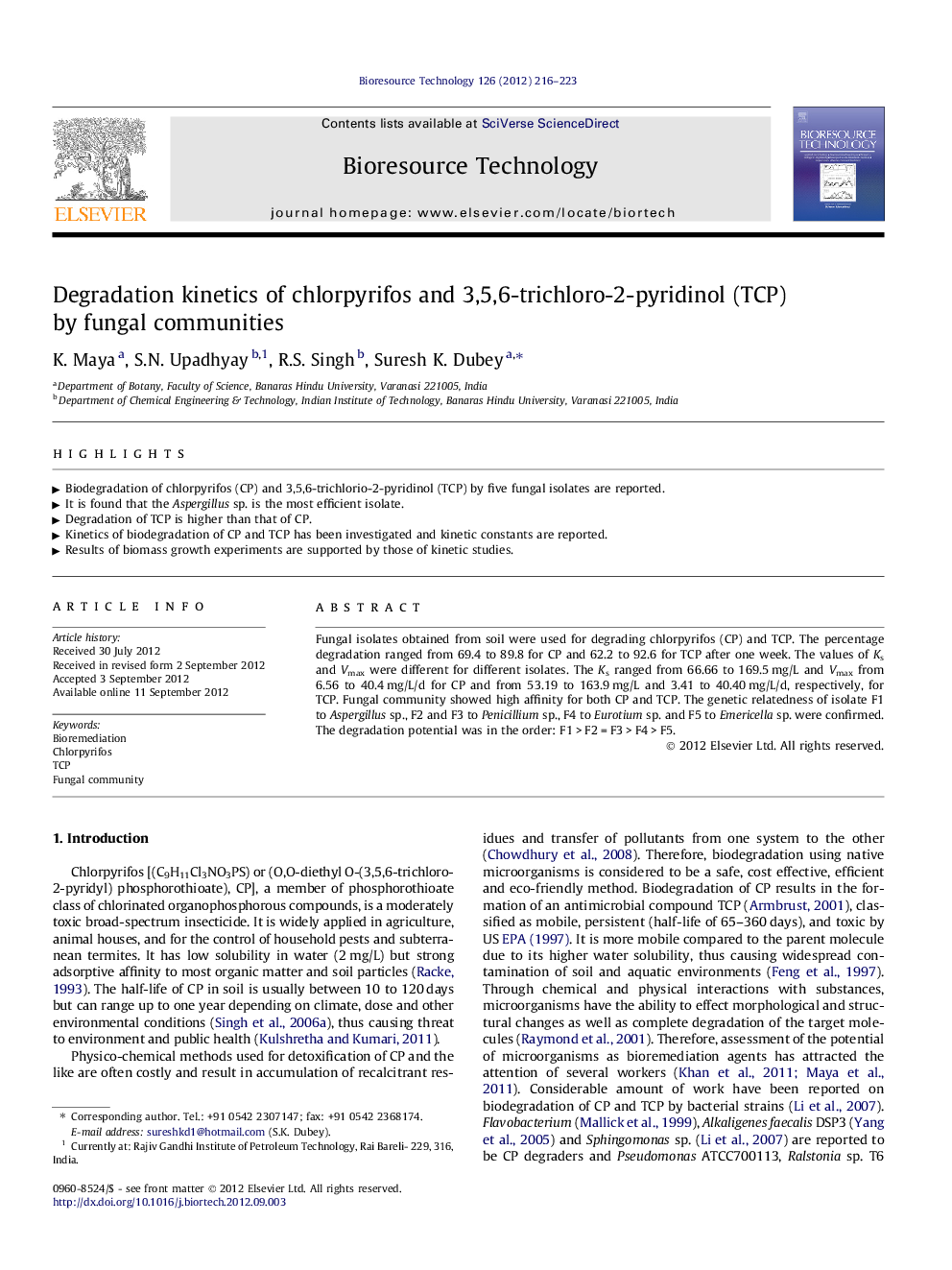| Article ID | Journal | Published Year | Pages | File Type |
|---|---|---|---|---|
| 681271 | Bioresource Technology | 2012 | 8 Pages |
Fungal isolates obtained from soil were used for degrading chlorpyrifos (CP) and TCP. The percentage degradation ranged from 69.4 to 89.8 for CP and 62.2 to 92.6 for TCP after one week. The values of Ks and Vmax were different for different isolates. The Ks ranged from 66.66 to 169.5 mg/L and Vmax from 6.56 to 40.4 mg/L/d for CP and from 53.19 to 163.9 mg/L and 3.41 to 40.40 mg/L/d, respectively, for TCP. Fungal community showed high affinity for both CP and TCP. The genetic relatedness of isolate F1 to Aspergillus sp., F2 and F3 to Penicillium sp., F4 to Eurotium sp. and F5 to Emericella sp. were confirmed. The degradation potential was in the order: F1 > F2 = F3 > F4 > F5.
► Biodegradation of chlorpyrifos (CP) and 3,5,6-trichlorio-2-pyridinol (TCP) by five fungal isolates are reported. ► It is found that the Aspergillus sp. is the most efficient isolate. ► Degradation of TCP is higher than that of CP. ► Kinetics of biodegradation of CP and TCP has been investigated and kinetic constants are reported. ► Results of biomass growth experiments are supported by those of kinetic studies.
